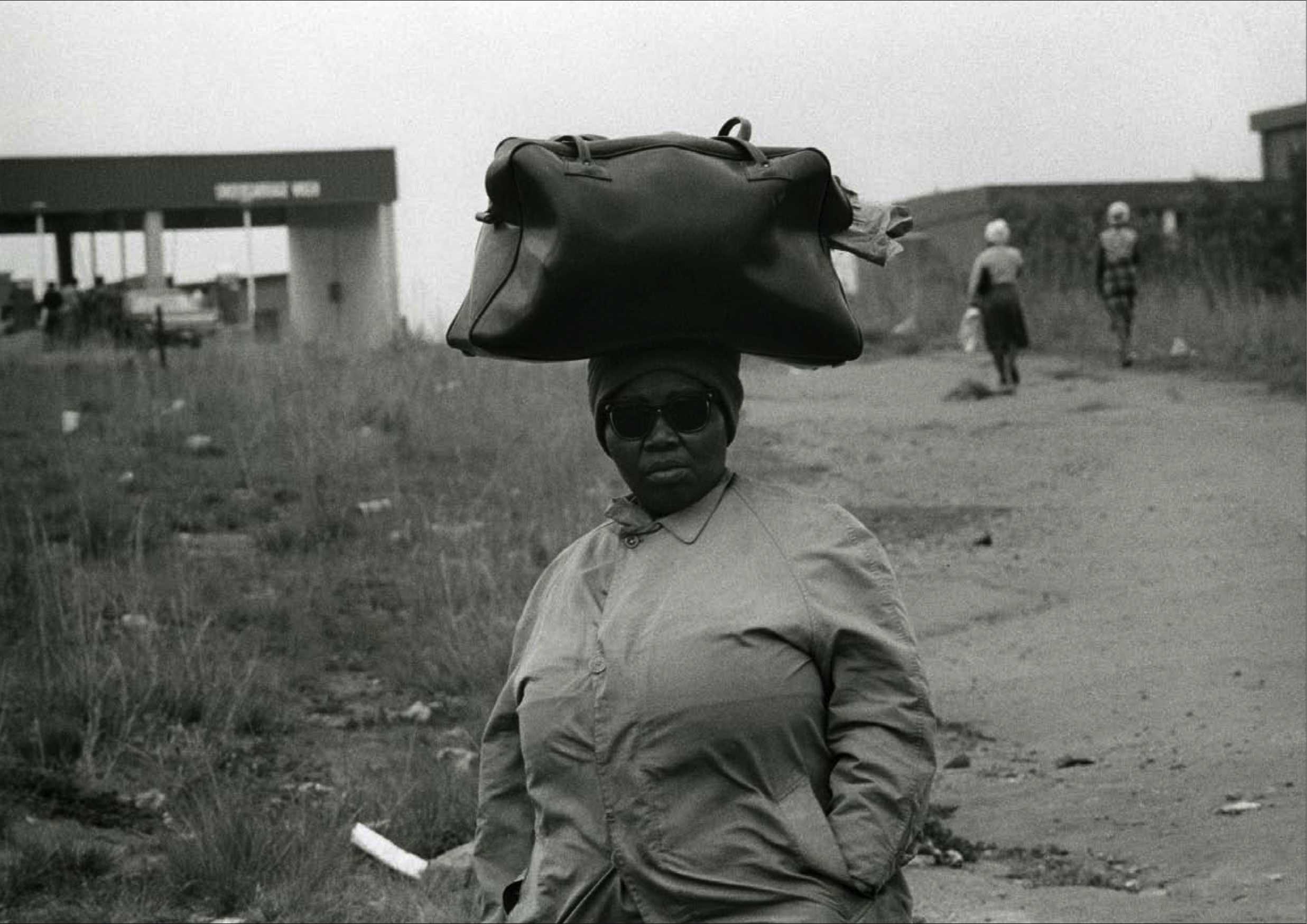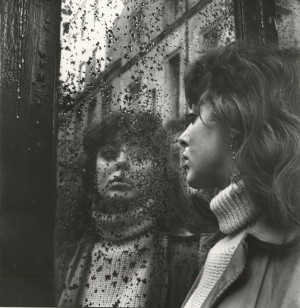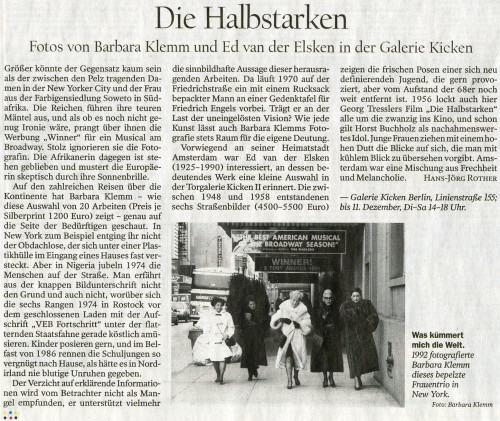ED VAN DER ELSKEN
EXHIBITION Oct 16 — Dec 11, 2010






ED VAN DER ELSKEN (1925–1990)
Amsterdam, 1955
gelatin silver print, printed ca. 1955
31 x 24 cm
Nederlands Fotomuseum © Ed van der Elsken / Courtesy Kicken Berlin

ED VAN DER ELSKEN (1925–1990)
Amsterdam, Nieuwmarket, 1958
gelatin silver print, printed ca. 1958
30,2 x 40,5 cm
Nederlands Fotomuseum © Ed van der Elsken / Courtesy Kicken Berlin

ED VAN DER ELSKEN (1925–1990)
Amsterdam 1948. There are hardly any supplementary benefits for old people / Er zijn nog nauwelijks "sociale uitkeringen" voor oude mense, 1948
gelatin silver print, printed c. 1977
25,6 x 25,3 cm
Nederlands Fotomuseum © Ed van der Elsken / Courtesy Kicken Berlin

ED VAN DER ELSKEN (1925–1990)
Amsterdam. Yobs on Nieuwendijk / Amsterdam. Nozems op Nieuwendijk, 1955
gelatin silver print, printed c. 1970s
20,2 x 30,6 cm
Nederlands Fotomuseum © Ed van der Elsken / Courtesy Kicken Berlin

ED VAN DER ELSKEN (1925–1990)
Amsterdam. 14 Juni 1966. The Construction workers' riot / De bouwvakrellen / Amsterdam. June 14, 1966., 1966
gelatin silver print, printed ca. 1971
28,7 x 23,8 cm
Nederlands Fotomuseum © Ed van der Elsken / Courtesy Kicken Berlin

ED VAN DER ELSKEN (1925–1990)
Amsterdam, Nieuwmarket, 1958
gelatin silver print, printed ca. 1958
24 x 18,4 cm
Nederlands Fotomuseum © Ed van der Elsken / Courtesy Kicken Berlin
Exhibition Text
Simultaneously Kicken II’s exhibition room will show Ed van der Elsken’s (1925-1990) works from his Amsterdam series (1955- 1960). Van der Elsken, one of the most important Dutch photographers much lauded for his groundbreaking photo books such as Love on the Left Bank (1956) and his documentaries, addressed his surroundings with critical interest and subjective straightforwardness. People and brief everyday occurrences on the street were his primary focus. After Paris, he found his material mostly in his hometown of Amsterdam. Young women with their beehives and sharply dressed beatniks stand directly vis-à- vis the photographer. Van der Elsken met them with his open, direct mind, always alert to unforeseen events and with a fine intuition for the city’s quotidien scenery by both day and night. In his images the bohemian Van Elsken captured the tensions between the petit bourgeoisie and the rebellious spirit of the 1950s with his subjective visual language. (Carolin Förster)


